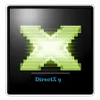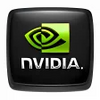This popular graphics engine has been used in many video games since the the 1990s
This popular graphics engine has been used in many video games since the the 1990s
Vote: (3,401 votes)
Program license: Free
Developer: Microsoft
Version: 9.29.1974.20210222
Works under: Windows
Vote:
Program license
(3,401 votes)
Free
Developer
Version
Microsoft
9.29.1974.20210222
Works under:
Windows
Pros
- Works with many games
- Easily installs
- Doesn't require any input to work
- Once you have it installed it works with every app that needs it
Cons
- Often unnecessary
- New games seldom rely on it
- No UI
DirectX is an application interface layer that allows high-level software to communicate with physical hardware. While you might never need to directly talk to a piece of hardware, there are countless high-resolution computer games on the market that need DirectX to run. Once you've installed it, you'll never have to think about it ever again.
Even if you've never looked at a piece of code you'll still be able to install DirectX. Microsoft designed it to seamlessly install with many game packages, so you might not realize that you already have it. Those who don't simply need to load one single bundle and click next a couple of times.
Installation really is that simple. It might take a few moments to get loaded, but once DirectX is installed it doesn't have a user interface worth bringing up or any other widgets that need to be worked with. There are a few command line utilities you could theoretically configure, but you'll probably never have to even give them the time of day.
Part of the reason for this is the fact that almost every game on the market has a configuration screen of its own. If you want to chance the resolution or adjust the number of colors, then you'd probably just do it by pushing escape in the game you're playing and setting some sliders
The same goes for keyboard setup and everything else you'd want to change about your gaming environment.
Programmers might appreciate some of these advanced features, but technically they shouldn't be necessary for modern games anyway. You'd probably be better off using a different type of API, so even power users will probably just want to install DirectX once and then leave it alone for good.
That being said, the driver pack opens up a huge number of games to the average player. You'll be able to install countless retro titles as well as some more recent games that were developed right up to the point where Microsoft attempted to migrate people to more recent APIs.
If you enjoy playing RTS or FPS games, then DirectX is more than likely a must for you. It's become extremely popular among those who collect PC games on physical media. These games often required DirectX since they were published during an era where games were transitioning from MS-DOS to the Windows platform and needed a way to directly write to a graphics terminal.
That means that games that deploy DirectX are going to look great, especially for the time that they were developed in. The platform doesn't just include graphics routines, though. DirectSound, for instance, allows games and other full-screen musical applications to access your sound card in a way that enables them to put together some really great audio. That's important for those who have a stereo sound system plugged into their computer or are working on a laptop that has high-quality built-in speakers.
Occasionally, you'll find that some game spits out an error message when you try to run it on modern hardware. You might be able to use the included utilities to fix this, though they won't appear on any application lists. Fortunately, a lot of developers of the era included little bits of code in the so-called late breaking news files they put on CD-ROMs. All you have to do is copy this into the run box and go.
Keep in mind that almost nobody will have to do that, because things work perfectly out of the box in probably 99 percent of situations. Those who are setting up dedicated virtual machines to run their favorite games in will even be able to install it inside of it.
Those who run a virtualized instance of Windows can use the same exact DirectX pack to get their system working with any game that requires the API. Some games even slipstream DirectX with their install wizard, so you might end up with it even if you didn't realize you needed it.
Once you've installed the package, games that need it will stop asking. Those who plan on adding a bunch of DirectX-reliant apps might want to take a few moments to install it now to get the process out of the way for later.
Pros
- Works with many games
- Easily installs
- Doesn't require any input to work
- Once you have it installed it works with every app that needs it
Cons
- Often unnecessary
- New games seldom rely on it
- No UI
Pros
- Works Quietly In Background
- Multiple Versions
Cons
- Works Slow w/ Various Games
- Problems w/ Overlapping Versions
DirectX is a collection of free API software that works on multiple platforms, and the latest version of the software is DirectX 11. The tool became commonplace during the late 90s, and it was employed by a number of popular games. The engine is even used in more modern games, and it continues to be a valid piece of software for programming graphic interfaces and games.
Most versions of the software employed now are between DirectX 7 and DirectX 11, and each has a different set of compatible devices, games, and peripherals. Most games that require a graphics engine of this strength will work better with DirectX than any other type of graphics platform.
Since DirectX is really nothing more than a series of APIs for graphics, many game players won't realize the software is active since it operates entirely in the background. The only time a player would realize the software is active is in the event that an error occurs and the software pushes an error notification to the user.
Thankfully, DirectX itself doesn't often crash or produce errors of any sort, but it is possible for programming modules that it has been linked with to crash or produce errors that would bring DirectX down at the same time.
One of the drawbacks of the software suite, like many in this advanced category, is that the learning curve is a bit steep for the system. Unless you have a fair amount of experience in dealing with graphical APIs, it will take some time for you to feel proficient in the software. However, all graphics engines tend to have this issue since their inherent task is highly complex. If anything, DirectX is easier to learn since it's so popular and there is so much documentation for it online.
Most users of this software are never aware that they are using it. The software will download and install itself as part of the game software, and it will always run itself in the background of the full game software. You might have some games that will give the option to select which graphics engine you want to use, so you could select another engine like OpenGL. However, if you hope to use the software on rare or old devices, DirectX is the answer due to its high compatibility. OpenGL is an excellent graphics engine, but it works better on systems with the most advanced hardware. It can be difficult to enjoy OpenGL on a system that is slow or old. If given the option, DirectX is possibly the safest and most reliable choice. The tool and all subsequent pieces of software that go with it were developed by Microsoft, and you can learn a great deal more about it on their website. You'll find detailed guides, hints, and tips.
Pros
- Works Quietly In Background
- Multiple Versions
Cons
- Works Slow w/ Various Games
- Problems w/ Overlapping Versions




